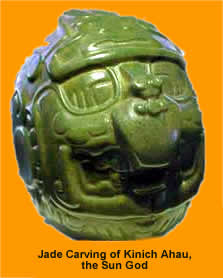bug tacos |
arts
|
dance | hairless dogs | textiles | stone tree | marriage | jade | trading |
ceramics | aztecs
 |
 |
| Book Store |
 mortars,
pestles and bags of salt.
mortars,
pestles and bags of salt.
As legal tender, they used cacao, jade and feathers sprinkled with gold dust.
Merchants belonged to a highly organized group that had power and influence. As individuals, they commanded respect and they always traveled with carriers and/or slaves. In the codices, they are pictured with fans, a symbol of their class and occasionally with ceremonial staffs. They had their own god and protector, Ek Chuah, to whom they paid daily homage.The Maya also worked the rivers of their homeland.
The Maya were familiar with wind and sea currents of the Caribbean. When heading for Central America, they hugged the coast slipping into currents running south. Staying close to shore meant they could avoid the reefs and its breakers. On the return trip they traveled way off shore, looking for what would later be called the Gulf Stream, one of the fastest currents on the planet.
The Maya sailed by day, and took every precaution to safeguard cargo and crew; nevertheless, travel by water was dangerous. Throughout the summer and early winter the region is subject to hurricanes and tropical storms, and from December to January to nortes, a kind of winter storm caused by cold fronts moving into the area from the north with winds of up to 80 kilometers per hour.






